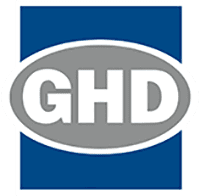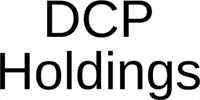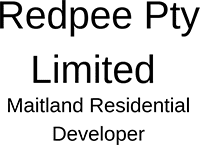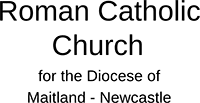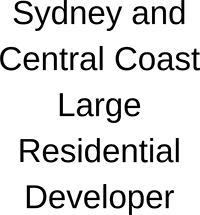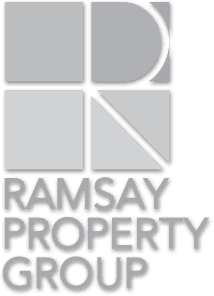About Delta Associates Pty Limited
In New South Wales and under NSW State legislation, any person or organisation undertaking a project that will have an impact or require clearing of more than .5 ha / 1.5 acres / 5,000 m2 of vegetation will be required to provide an offset. Impacts on vegetation are typically undertaken by residential, commercial, industrial developers, infrastructure providers, mines, quarries, etc. To achieve the necessary offsets the purchase of NSW Biodiversity credits for either ecosystem / vegetation credits for species credits is required.
Based in Newcastle NSW, Delta Associates Pty Limited have been in the business of providing NSW Biobanking credits in the Hunter Valley since the outset of the program several years ago. Delta Associates Pty Limited have done over twenty NSW Biodiversity credit sales transactions ranging from as little as a few credits to multi-year 4,000 credits sales.
We offer flexible contracting terms and credit pricing that meets the market. Your project may wish to secure credits today at today’s credits prices whilst having the flexibility of an option agreement or a deferred settlement. If our first credit sale with your firm is seamless, we expect you will contact us again when you have a further offset requirement.
Credits Available
Our private register of Biodiversity Credits available in the Hunter Valley can help you find environmental offsets for your project. Delta Associates can also assist you with information throughout the purchasing process. We provide an easy to follow step by step guide to the Credit Buying Process and an up to date list of credits available. For more details use our contact form to make an enquiry.
| Biometric Vegetation Type | PCT Common Name | PCT ID | IBRA Sub Region | HU that can be offset | PCT that can be offset (BBAM v2 and FBA) | PCT that can be offset (BAM v3) |
|---|---|---|---|---|---|---|
| HU613 | Shatterwood - Giant Stinging Tree - Yellow Tulipwood dry rainforest of the NSW North Coast Bioregion and northern Sydney Basin Bioregion | 1142 | Upper Hunter | 613, 754, 693, HN537, ME042, SR551, 752, CW301, NA344, BR202, BR397, NA412, HN538, ME027, SR552, NA198, NR179, NA202, NR229, 753, NA270 | 1142, 1540, 616, 875, 1538, 388, 1124, 547, 877, 1124, 887, 1539, 627 | 616, 1540, 875, 1538, 388, 547, 877, 1124, 887, 1539, 627 |
| HU739 | Sandpaper Fig - Whalebone Tree warm temperate rainforest | 1525 | Upper Hunter | 739, 388, 547, 616, 627, 875, 877, 887, 1124, 1142, 1525, 1538, 1539, 1540, 1541, 1543 | 1525, CW301, NA344, BR397, NA412, 693, NA270, HN537, ME042, SR551, HN538, ME027, SR552, NR179, BR202, NA198, 613, NA202, NR229, 739, 752, 753, 754, 755, 757 | 1525, 616, 1540, 875, 1538, 388, 547, 877, 1124, 887, 1142, 1539, 627, 1543, 1525, 1541 |
| HU747 | Rosewood - Brown Beech Sub-tropical Rainforest on Ranges of the Lower North Coast and Barrington Tops | 1533 | Karuah Manning | HU529, HU613, HU628, HU651, HU741, HU742, HU743, HU744, HU747, HU748, HU749, HU759, NA142, NA202, NR110, NR147, NR166, NR178, NR179, NR229, NR241, NR280, NR299 | 669, 768, 770, 845, 886, 887, 1068, 1142, 1201, 1294, 1302, 1527, 1528, 1529, 1530, 1533, 1534, 1535, 1545, 1827 | |
| HU755 | Whalebone Tree - Red Kamala dry subtropical rainforest of the lower Hunter River | 1541 | Upper Hunter | 755, 113, 145, 147, 388, 547, 616, 627, 669, 875, 877, 1123, 1124, 1142, 1525, 1538, 1539, 1540, 1541, 1543 | 1541, NA177, BR249, CW222, NA235, WE150, BR203, NA199, CW301, NA344, BR397, NA412, 693, NA270, NR110, HN537, ME042, SR551, HN538, ME027, SR552, NR179, SR613, BR202, NA198, 613, NA202, NR229, 739, 752, 753, 754, 755, 757 | 1541, 616, 1540, 875, 1538, 388, 547, 877, 1124, 887, 1142, 1539, 627, 1543, 1525, 1541 |
| HU763 | Tallowwood - Spotted Gum - Grey Gum grassy tall open forest of the lower North Coast | 1549 | Karuah Manning | HN577, HN604 , HN653, HN664, HN665, HN668, HN670, HU511, HU601, HU620, HU762, HU763, HU764, HU770, HU771, HU772, HU778, HU779, HU794, HU796, HU798, HU799, ME041, ME61, ME62, ME83, ME87, ME88, NR119;, NR124, NR125, NR144, NR222, NR263, NR267, NR268, SR695 | 690, 691, 697, 698, 755, 1092, 1180, 1262, 1267, 1268, 1281, 1385, 1548, 1549, 1550, 1556, 1557, 1558, 1564, 1565, 1580, 1582, 1584, 1585, 1845, 1846, 1847, 1848, 1914 | |
| HU775 | Large-fruited Grey Gum - White Mahogany shrub - grass open forest on the slopes of Barrington Tops and lower North Coast | 1561 | Karuah Manning | HU775, HU724, NA367, HU705, HU507, HU512, NR120, NR121, HU513, NR122, NR126, HU522, NR138, NR139, HU524, NR143, NR156, NR251, NR259, HU643, NR262, NR265, NR266, HN605, HU650, HN606, ME032, HU776, HU777, HU780, HU781, HU786, HU787, HU789, HU793 | 1561, 487, 487, 613, 684, 692, 692, 693, 695, 695, 699, 747, 747, 748, 752, 752, 812, 1222, 1257, 1261, 1261, 1265, 1266, 1282, 1284, 1562, 1563, 1566, 1567, 1572, 1573, 1575, 1579 | 1561, 487, 613, 684, 692, 693, 695, 699, 747, 748, 752, 812, 826, 1073, 1208, 1222, 1245, 1257, 1259, 1260, 1261, 1265, 1266, 1282, 1284, 1562, 1563, 1566, 1567, 1568, 1569, 1572, 1573, 1575, 1579 |
| HU781 | Tallowwood - Brush Box - Sydney Blue Gum moist shrubby tall open forest on foothills of the lower North Coast | 1567 | Karuah Manning | HU781, HU513, NR122, NR126, HU643, NR262, NR266, HN605, HU650, HN606, ME032, HU776, HU780, HU786, HU787, HU793 | 1567, 695, 695, 699, 1261, 1261, 1266, 1282, 1284, 1562, 1566, 1572, 1573, 1579 | 1567, 487, 613, 684, 692, 693, 695, 699, 747, 748, 752, 812, 826, 1073, 1208, 1222, 1245, 1257, 1259, 1260, 1261, 1265, 1266, 1282, 1284, 1561, 1562, 1563, 1566, 1568, 1569, 1572, 1573, 1575, 1579 |
| HU783 | Flooded Gum - Brush Box - Tallowwood mesic tall open forest on ranges of the lower North Coast | 1569 | Karuah Manning | HN505, HN596, HN597, HN605, HN606, HN647, HN648, HU507, HU525, HU535, HU542, HU543, HU571, HU638, HU639, HU642, HU643, HU650, HU705, HU724, HU775, HU776, HU777, HU780, HU781, HU782, HU783, HU786, HU787, HU789, HU793, ME001, ME030, ME044, ME056, ME58, ME60, ME63, NA367, NR117, NR120, NR121, NR122, NR126, NR138, NR139, NR143, NR156, NR159, NR160, NR219, NR243, NR248, NR251, NR258, NR259, NR260, NR261, NR262, NR265, NR266, NR274, SR516, SR652, SR699 | 487, 613, 661, 684, 686, 692, 693, 694, 695, 699, 747, 748, 752, 754, 789, 812, 826, 827, 942, 1073, 1208, 1217, 1222, 1237, 1241, 1242, 1244, 1245, 1257, 1258, 1259, 1260, 1261, 1265, 1266, 1282, 1284, 1285, 1504, 1561, 1562, 1563, 1566, 1567, 1568, 1569, 1572, 1573, 1575, 1579, 1840, 1841, 1843, 1844, 1915 | |
| HU798 | White Mahogany - Spotted Gum - Grey Myrtle semi-mesic shrubby open forest of the central and lower Hunter Valley | 1584 | Upper Hunter | 798, 690, 697, 698, 755, 1092, 1262, 1267, 1268, 1281, 1385, 1548, 1549, 1550, 1556, 1557, 1558,1564, 1565, 1580, 1582, 1584, 1585, 1845, 1846, 1847, 1914 | 1584, 514, NR124, NR125, NR144, 596, NR222,644, NR263, NR267, 646, NR268, HN577, 601, 762, 763, 764, 770, 771, HN665, ME88, 778, 779, HN664, ME86, 794, 796, 798, 799, HN670, ME87, SR695 | 1584, 1564, 1580, 1385, 1582, 1268, 1565, 1549, 1550, 697, 698, 1092, 1262, 755, 1557, 1548, 1556, 1584, 1267 |
| HU802 | Grey Ironbark - Broad-leaved Mahogany - Forest Red Gum shrubby open forest on Coastal Lowlands of the Central Coast | 1588 | Upper Hunter | 802, NR180, 962, 840, NR129, 826, 805, NR247, 806, 804, 807, 822, 816, 564, 814 | 1588, 904, 1748, 1626, 715, 1612, 1591, 1215, 1592, 1590, 1593, 1608, 1602, 1588, 922, 1600 | 1588, 904, 1748, 1626, 715, 1612, 1591, 1215, 1592, 1590, 1593, 1608, 1602, 1588, 922, 1600 |
| HU804 | Spotted Gum - Broad-leaved Mahogany - Red Ironbark shrubby open forest | 1590 | Upper Hunter, Karuah Manning | 804, NR180, 962, 840, NR129, 826, 805, NR247, 806, 807, 822, 816, 802 | 1590, 904, 1748, 1626, 715, 1612, 1591, 1215, 1592, 1593, 1608, 1602 | 1590, 904, 1748, 1626, 715, 1612, 1591, 1215, 1592, 1593 |
| HU806 | Spotted Gum - Red Ironbark - Grey Gum shrub - grass open forest of the Lower Hunter | 1592 | Upper Hunter | 806, NR180, 962, 840, NR129, 826, 805, NR247, 804, 807, 822, 816, 802, 564, 814, 803, 619, 815 | 1592, 904, 1748, 1626, 715, 1612, 1591, 1215, 1592, 1590, 1593, 1608, 1602 | 1592, 904, 1748, 1626, 715, 1612, 1591, 1215, 1592, 1590, 1593 |
| HU815 | Spotted Gum - Narrow-leaved Ironbark-Red Ironbark shrub - grass open forest of the central and lower Hunter | 1601 | Upper Hunter | 815, NR180, 962, 840, NR129, 826, 805, NR247, 806, 804, 807, 822, 816, 802, 564, 814, 803, 619, 815 | 1601, 904, 1748, 1626, 715, 1612, 1591, 1215, 1592, 1590, 1593, 1608, 1602, 1588, 922, 1600, 1589, 1178, 1601 | 1601, 904, 1748, 1626, 715, 1612, 1591, 1215, 1592, 1590, 1593, 1608, 1602, 1588, 922, 1600, 1589, 1178, 1601 |
| HU833 | Smooth-barked Apple - Red Bloodwood - Brown Stringybark - Hairpin Banksia heathy open forest of coastal lowlands | 1619 | Upper Hunter | 833, SR594, HN566, 595, ME014, SR595, 715, SR629, HN586, HN587, 622, HN651, ME012, SR653, HN644, 834, 835, 837, 838, 841, 846, 852, 856, 857, 895, HN675, ME97, SR696, HN656, ME66, HN657, ME106, ME68, SR694, HN671, ME99 | 1619, 1082, 1083, 1138, 1156, 1181, 1183, 1250, 1253, 1620, 1621, 1623, 1624, 1627, 1632, 1638, 1642, 1643, 1681, 1777, 1780, 1783, 1785, 1787 | 1619, 1620, 1623, 1627, 1083, 1777, 1156, 1181, 1632, 1643, 1183, 1250, 1621, 1642, 1783, 1780, 1787, 1785, 1624, 1681 |
| HU922 | Rock outcrops shrublands complex of the lower North Coast | 1708 | Upper Hunter | 922, 446, 499, 519, 520, 521, 535, 548, 561, 667, 785, 885, 1708, 1710 | 1708, BR331, CW296, 710, NA333, CW309, 728, NA371, BR148, NA378, BR305, BR321, BR341, BR342, NR108, NR152, CW143, LA150, 922, 924 | 1708, 1710, 521, 535, 561, 667, 520, 519, 499, 548, 785, 885, 522, 884 |
| HU930 | Swamp Sclerophyll Forest on Coastal Floodplains of the New South Wales North Coast, Sydney Basin and South East Corner Bioregions | 1716 | Karuah Manning | HU930, HU931, HN551, ME040, HN561, NR253, HU633, HN593, ME010, SR648, HU863, HU930, HU933, HU935, HU936, HU938, HU939, HU940, HU943, HU944, HU945 | 1716, 923, 923, 1064, 1227, 1230, 1231, 1231, 1231, 1649, 1717, 1719, 1721, 1722, 1724, 1725, 1726, 1729, 1730, 1731 | 1716, 923, 1231, 1649, 1717, 1719, 1721, 1722, 1724, 1725, 1726, 1729, 1731, 1794, 1795, 1798 |
| NR259 | Tallowwood - Brush Box - Sydney Blue Gum moist shrubby forest of the southern NSW North Coast Bioregion | 1257 | Upper Hunter | NR259, 724, NA367, 705, 507, 512, NR120, NR121, 513, NR122, NR126, 522, NR138, NR139, 524, NR143, 525, 535, NR156, 542, NR159, 571, NR219, NR243, NR251, 638, 639, 642, NR260, NR261, 643, NR262, NR265, NR266, HN605, 650, HN606, ME032, 775, 776, 777, 780, 781, 782, 786, 787, 789, 793 | 1257, 487, 613, 684, 692, 693, 695, 699, 747, 748, 752, 754, 789, 812, 826, 942,1073, 1208, 1222, 1241, 1242, 1257, 1258, 1259, 1260, 1261, 1265, 1266, 1282, 1284, 1561, 1562, 1563, 1566, 1567, 1568, 1572, 1573, 1575, 1579 | 1257, 1572, 1579, 1573, 1567, 695, 1261, 1282, 1284, 1562, 1566, 699, 1266, 487, 692, 693, 748, 1265, 613, 1575, 1563, 1561, 747, 752, 812, 1222, 1073, 1208, 1259, 1260, 1568, 684, 1245, 1569 |
| Koala | ||||||
| Brush Tailed Phascogale | ||||||
| Southern Myotis Bats | ||||||
| Squirrel Glider | ||||||
| Nettled Bottlebrush | ||||||
| HU696, /NR191/BR158 | Mountain Gum - Broad-leaved Stringybark shrubby open forest on granites of the New England Tableland Bioregion (Derived Native Grassland) | 524 | Nightcap | HU573, NA158, BR309, HU696, HU573, NA263, NR135, NA167, NR196, BR166 | 524, 526, 568, 740, 970, 997 | 524, 526, 568, 740, 970, 997 |
| HU573/NA158/BR309 | Mountain Ribbon Gum - Messmate - Broad-leaved Stringybark open forest on granitic soils of the New England Tableland Bioregion (Derived Native Grassland) | 526 | Nightcap | HU573, NA158, BR309, HU696, HU573, NA263, NR135, NA167, NR196, BR166 | 524, 526, 568, 740, 970, 997 | 524, 526, 568, 740, 970, 997 |
| NA318/BR318 | New England Peppermint grassy woodland on granitic substrates of the New England Tableland Bioregion (EEC) | 533 | Nightcap | NA318,BR318, NA319, BR319 | 533,534 | 533,534 |
| NA103/NR109/BR103 | Bell-fruited Mallee tall heath on granite of the Gibraltar Range area of the eastern New England Tableland Bioregion | 668 | Nightcap | NA103, NR109,BR103, NR210, BR173 | 668, 992 | 668, 992 |
| NR275/BR230 | Upland heath swamps of the New England Tableland Bioregion (EEC) | 1287 | Nightcap | NR275, BR230 | 518, 1287 | 518, 1287 |
NSW Biodiversity Ecosystem Credits
NSW Biodiversity Ecosystem Credits are created for all ecological communities, as well as threatened species that can be reliably predicted as occurring on site, using the presence of vegetation that provides habitat for a given ecological community or threatened species. The number of ecosystem credits is calculated based on vegetation surveys.
NSW Biodiversity Species Credits
Species credits are created for threatened species that cannot be reliably predicted using habitat surrogates. The number of species credits is calculated based on targeted survey reports.
FAQs
BioBanking offers several advantages for developers:
- It can reduce costs and time associated with biodiversity assessments
- It provides a transparent and consistent rule-based approach for determining offsets, enabling offset requirements to be assessed even in the initial stages of project design
- It allows credit requirements to be estimated and purchased at any stage of the project proposal
- It enables offset sites to be managed by biobank site land owners interested in conservation rather than by developers
- It enables greater flexibility in project management and costs
- Local development that will have impacts above the ‘Biodiversity Offsets Scheme Threshold’ or is likely to significantly affect threatened species or ecological communities based on the assessment of significance in s7.3 of the Biodiversity Conservation Act 2016. (“Local development” is development approved under Part 4 of the Environmental Planning and Assessment Act 1979 (EP&A Act) other than State Significant Development and Complying Development)
- State Significant Development and State Significant Infrastructure, unless it is not likely to have any significant impact on biodiversity values (as determined by the Secretary of the Department of Planning and Environment and the Chief Executive of the Office of Environment and Heritage)
- Clearing above the Biodiversity Offsets Scheme Threshold regulated through the Vegetation State Environmental Planning Policy. This covers clearing that does not require development consent in urban areas and environmental conservation zones (E2-E4 zones)
- Agricultural clearing proposals that require approval by the Native Vegetation Panel under the Local Land Services Amendment Act 2016
- Biodiversity certification proposals
- Activities assessed under Part 5 of the EP&A Act, if the proponent chooses to opt-in to the Biodiversity Offsets Scheme
The Biodiversity Offsets Scheme threshold is a simple, objective, risk-based test used to determine when the Biodiversity Assessment Method and the Biodiversity Offsets Scheme apply. It is relevant to local developments (Part 4, non-state significant development/state significant infrastructure under the Environmental Planning and Assessment Act 1979) and clearing regulated by the State Environmental Planning Policy (Vegetation) 2017 (Vegetation SEPP).
There are two elements to the threshold test – an area trigger and a Biodiversity Values Map trigger. If clearing exceeds either trigger, the Biodiversity Offset Scheme applies to the proposed clearing.
Local development that does not exceed the threshold are also required to assess if the development is likely to significantly affect threatened species or ecological communities based on the assessment of significance in s7.3 of the Biodiversity Conservation Act 2016. If the development is likely to have a significant effect, then the Biodiversity Offsets Scheme applies.
Developers have a range of options to offset biodiversity impacts under the Biodiversity Offsets Scheme. These include buying credits from Biodiversity Stewardship sites, funding biodiversity actions or they can pay money into the Biodiversity Conservation Fund to meet their offset obligation. The Biodiversity Conservation Regulation 2017 contains offset rules governing how these offset options are used.
Species credits are created for threatened species that cannot be reliably predicted using habitat surrogates. The number of species credits is calculated based on targeted survey reports.
Ecosystem credits are created for all ecological communities, as well as threatened species that can be reliably predicted as occurring on site, using the presence of vegetation that provides habitat for a given ecological community or threatened species. The number of ecosystem credits is calculated based on vegetation surveys.
If a landholder decides to generate biodiversity credits (by signing up to a biodiversity stewardship agreement) they can sell those credits to developers to offset the biodiversity impacts of the development proposal. Alternatively, government or philanthropic organisations may choose to purchase the credits to secure biodiversity protections for the site.
The sale price for these credits will be negotiated on a case by case basis by the landholder and the credit buyer. As a minimum, the price must include the costs of managing the stewardship site.
Our Clients
Delta Associates have been providing a range of biodiversity credit solutions to developers, infrastructure providers, councils, corporations and mines since the outset of the NSW Government program in 2012 with flexible contracting terms and competitive credit pricing. Having completed over twenty NSW BioBanking credit sales transactions, ranging from as little as a few credits to multi-year 4,000 credits sales, we have a reputation for delivering a flexible and seamless process.
Enquire today
Contact us today for more information on pricing and our flexible contract terms for Ecosystem or Species credits.







